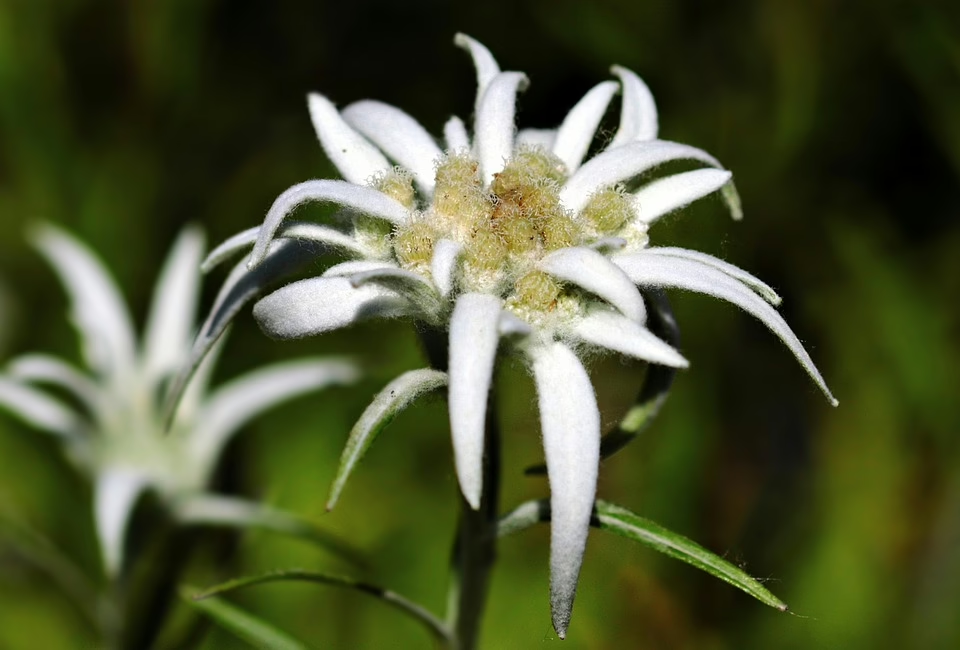Unveiling the Uncommon: Celebrating Nature’s Rare Beauty
Nature has always been a source of inspiration and awe. From the breathtaking landscapes that stretch across our planet to the intricate ecosystems that thrive in every corner of the globe, the enchantment of nature often lies in its hidden gems—the rare and unusual specimens that defy our expectations. This article seeks to unveil the uncommon wonders of the natural world, celebrating their beauty while exploring their significance in terms of biodiversity, conservation, and human appreciation of these extraordinary phenomena.
The Value of Biodiversity
Understanding Biodiversity
Biodiversity encompasses the variety of life on Earth, including the genetic diversity within species, the diversity of species themselves, and ecosystem variety. This complex web of life forms the foundation of environmental health and resilience. According to the United Nations, biodiversity is essential for human survival, playing a crucial role in providing food, clean air, and water.
The Uncommon Representatives
While common species often receive more attention due to their abundance, rare species represent unique evolutionary paths and adaptations. For instance, the Himalayan Blue Poppy (Meconopsis betonicifolia) is not just stunning blue; it’s also unique to specific mountainous regions. These plants evolve under unique conditions, showcasing nature’s creativity and resilience.
Conserving rare species is paramount because they often play significant roles in their ecosystems. Species like the Florida Panther (Puma concolor coryi) and the California Condor (Gymnogyps californianus) serve as “umbrella species.” Protecting them helps to conserve their habitats and, by extension, the myriad of life that exists alongside them.
Iconic Rare Species
The Corpse Flower
Arguably one of the most famous rare species is the Corpse Flower (Amorphophallus titanum), known for its massive size and foul odor, reminiscent of rotting flesh. Native to the rainforests of Sumatra, this flower captures attention not only due to its odor but also because it only blooms every seven to ten years, making it a highly anticipated event for botanical enthusiasts worldwide.
The Corpse Flower plays a crucial role in its environment, attracting specific pollinators, primarily carrion beetles and flesh flies. Despite its ghastly name, its unique beauty and ecological role highlight how rare plants contribute to the rich tapestry of biodiversity.
The Kakapo
The Kakapo (Strigops habroptilus), a flightless parrot native to New Zealand, is another rarity worth mentioning. With fewer than 250 individuals remaining, this nocturnal bird has become a symbol of conservation efforts worldwide. The Kakapo’s story is a testament to the impacts of invasive species, habitat loss, and the efforts of dedicated conservationists who strive to bring this unique bird back from the brink of extinction.
The Ghost Orchid
One of the rarest and most sought-after flowers in the world is the Ghost Orchid (Dendrophylax lindenii), which is native to the swamps of Florida and Cuba. This flower is elusive and difficult to find, making it a coveted treasure for botanists and nature lovers alike. The Ghost Orchid thrives in specific environmental conditions, requiring particular moisture and light levels to bloom.
Its rarity has inspired conservation efforts aimed at protecting its natural habitat. The Ghost Orchid’s delicate beauty and mysterious nature embody the complexities of conservation—highlighting the balance between appreciation and preservation.
Exceptional Ecosystems
Tropical Rainforests
One of the most biodiverse and rare ecosystems on Earth is the tropical rainforest. Though covering only about 6% of the Earth’s land surface, tropical rainforests house approximately 50% of the world’s plant and animal species. These regions showcase incredible natural beauty and unique interactions among diverse flora and fauna.
Among the rare phenomena in rainforests, one stands out: the canopy layer, a complex web of life that is still largely unexplored. The canopy serves as a habitat for hundreds of species, many of which have never been documented. This hidden world presents a rare opportunity for discovery and highlights the importance of conserving these ecosystems.
The Great Barrier Reef
Another stunning example is the Great Barrier Reef, the world’s largest coral reef system located off the coast of Australia. Comprising over 2,900 individual reefs, it is home to an astounding variety of marine life, including endangered species such as the Hawksbill Sea Turtle and the Dugong.
However, the rare beauty of the Great Barrier Reef faces numerous threats, primarily from climate change and human activity. The phenomenon of coral bleaching—caused by rising sea temperatures—has brought international attention to the urgent need for conservation efforts that preserve not just the reef but its intricate ecosystem.
The Uncommon in Our Backyard
Local Biodiversity
Celebrating rare species is not limited to distant rainforests or oceans. Many people overlook the extraordinary biodiversity that exists in their own backyards. Urban areas often harbor surprising pockets of natural beauty, including rare plants and animals that have adapted to urban environments.
For example, the Eastern Box Turtle (Terrapene carolina) is often found in suburban gardens (yet heavily threatened) and serves as a reminder of the diversity that can exist within urban settings. By embracing local biodiversity, communities can foster appreciation for the ecological connections that sustain life.
Citizen Science Initiatives
Recent years have seen a rise in citizen science initiatives aimed at documenting and celebrating local biodiversity. Platforms like iNaturalist allow people to photograph and record their sightings of rare species, contributing valuable data to scientific research.
By participating in such initiatives, individuals not only engage with nature but also play a vital role in conservation efforts. Each observation adds to the understanding of local habitats and underscores the importance of preserving the rare beauty found in these environments.
Conservation Challenges
Threats to Rare Species
Despite the celebration of rare beauty, numerous challenges threaten the survival of uncommon species and ecosystems. Habitat destruction, climate change, pollution, and invasive species are among the most significant threats.
For example, the Vaquita (Phocoena sinus), a small porpoise native to the Gulf of California, faces an imminent risk of extinction due to illegal fishing practices and habitat loss. With fewer than 30 individuals remaining, the Vaquita serves as a stark reminder of the consequences of human actions on the delicate balance of ecosystems.
The Role of Conservation Organizations
Conservation organizations around the globe are mobilizing to protect rare species and their habitats. Initiatives like the World Wildlife Fund (WWF) and the International Union for Conservation of Nature (IUCN) focus on raising awareness, funding research, and implementing strategies to preserve biodiversity.
Community involvement and education are crucial in these efforts. By fostering a sense of stewardship, individuals can become advocates for change, promoting practices that protect vulnerable species and habitats.
The Importance of Appreciation
Inspiring Stewardship
In celebrating the rare beauty of nature, we not only acknowledge the importance of biodiversity but also inspire stewardship among communities. Education plays a pivotal role in shaping how individuals perceive the natural world. By learning about rare species, people may feel a deeper connection to nature, fostering a desire to protect it.
Art and literature have long celebrated the beauty of rare species and ecosystems. Illustrated books, documentaries, and art exhibits can ignite passions and lead to a broader movement towards conservation. Efforts to combine education with artistic expression can mobilize people, inspiring action to protect the uncommon wonders of the world.
Cultural Significance
The aura of rarity often comes with cultural significance. Many indigenous communities have deep spiritual connections to the unique flora and fauna in their regions. Their knowledge often encompasses traditional ecological practices that have preserved these species for generations.
Recognizing the cultural dimensions of rare species and ecosystems enriches our understanding and appreciation of them. By honoring traditional ecological knowledge, we can develop more inclusive conservation strategies that respect the values of Indigenous communities.
Conclusion
Unveiling the uncommon beauty of nature allows us to appreciate the rich tapestry of life that exists on our planet. From the exotic blooms of rare flowers to the elusive behaviors of endangered species, the rare wonders of nature remind us of the interconnectedness of all living things.
By celebrating these rare beauties, we not only inspire a sense of wonder but also encourage the stewardship necessary to protect them. Conservation efforts, community engagement, and a commitment to preserving biodiversity are essential in ensuring that future generations can experience the extraordinary phenomena our world has to offer.
As we move forward, let us remind ourselves to appreciate both the common and uncommon, fostering a harmonious relationship with nature that is rooted in respect and admiration. In doing so, we can embrace the rare beauty of our planet while advocating for its health and resilience.
Footnotes
- United Nations Convention on Biological Diversity, “Biodiversity and Ecosystem Services,” [modern_footnote_source].
- IUCN Red List, “Amorphophallus titanum,” [modern_footnote_source].
- New Zealand Department of Conservation, “Kakapo Recovery,” [modern_footnote_source].
- National Park Service, “Ghost Orchid,” [modern_footnote_source].
- WWF, “Biodiversity,” [modern_footnote_source].
- National Oceanic and Atmospheric Administration, “Great Barrier Reef,” [modern_footnote_source].
- iNaturalist Community, “Citizen Science,” [modern_footnote_source].
This outline serves as a guide for an expansive exploration of the topic. Each section could be elaborated upon significantly to reach the desired word count. If you would like me to elaborate on specific sections, just let me know!


























Add Comment